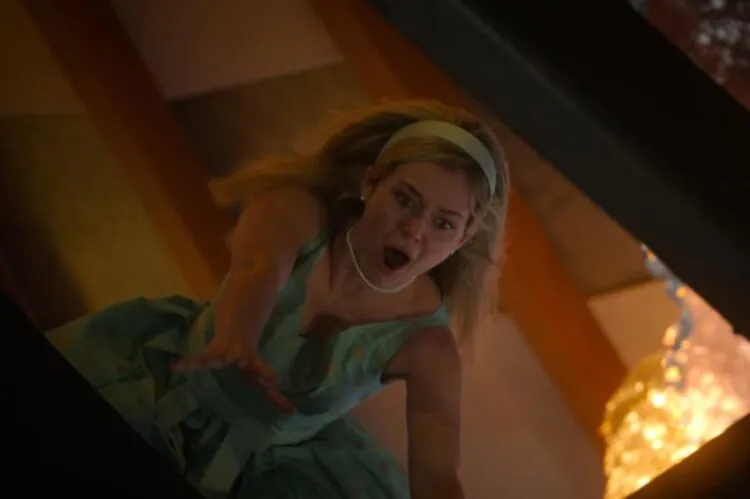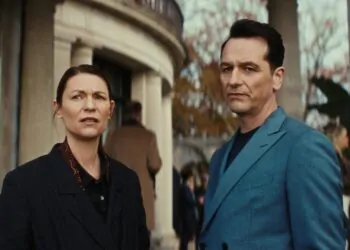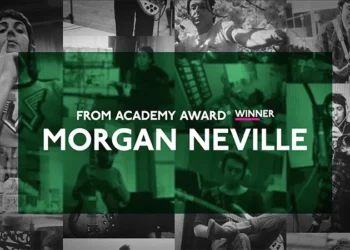After a gap of nearly 14 years since the last installment, the Final Destination franchise has made its return with its latest film, Final Destination: Bloodlines, which hit theaters on Friday. This new entry not only expands the series’ lore but also retains the franchise’s hallmark of delightfully excessive death sequences.
As is the tradition with each movie in the series, Bloodlines begins with a character receiving a premonition that allows them to evade a catastrophic event. This time, the story kicks off in the 1960s, focusing on Paul (Max Lloyd-Jones) and his fiancée, Iris (Brec Bassinger), as they attend the grand opening of the Sky View Restaurant Tower.
Directors Zach Lipovsky and Adam B. Stein effectively highlight various potential dangers lurking throughout the setting, from an overcrowded elevator to an unstable chandelier. Many of these threats come into play, leading to delightfully chaotic chain reactions—one notable scene sees a woman not only caught on fire but also stumbling into a gas leak.
In the present day, it is Iris’s granddaughter, Stefani (Kaitlyn Santa Juana), who wakes up from a nightmare about the Skyview incident. She returns home, hoping to reconnect with her estranged grandmother and uncover why she is dreaming of someone she has never met.
The screenplay, crafted by Guy Busick and Lori Evans Taylor from a story by Jon Watts, introduces a wealth of new concepts to the franchise. The notion of a Final Destination premonition spanning generations intensifies the sense of danger, making it feel even more relentless.
While Iris managed to survive the Skyview disaster, many others did not. Remarkably, she has outlived numerous attempts by death to claim her life over the years. Given that Iris has had children and those children have in turn had their own families, her entire lineage now finds itself on death’s radar, as her survival undermines the natural order that was supposed to occur. This familial connection amplifies the viciousness of Bloodlines, making it the most intense installment yet, particularly when compared to previous films that focused on unrelated individuals.
By centering the plot around a family, character dynamics deepen significantly, and the impact of their eventual demises resonates much more profoundly.
Bloodlines features some of the most notable death scenes in the franchise’s history, set in a variety of lethal locales including a tattoo parlor and a suburban street.
The death sequences are intricately designed, unfolding through elaborate chain reactions, and also introducing fresh surprises and red herrings. The narrative meticulously sets up various potential sources of danger, keeping the audience guessing as to which will ultimately prove fatal.
Will the piano or the chandelier spell doom for those hanging onto the edge of the Skyview? Meanwhile, a family barbecue in the present introduces a blender, a tub of ice, a propane tank, shards of glass, and a large Jenga game—all of which contribute to an atmosphere rife with tension and misdirection. An array of established elements misleadingly hints at disaster, showcasing how seemingly mundane actions can lead to catastrophic outcomes.
Bloodlines possesses an irreverent core, portraying a family earnestly striving to mend their bonds after severing ties with Iris due to her extreme paranoia, as well as coping with the aftermath of two shocking deaths they witness. Stefani’s belief that death is targeting them appears to be a response to their trauma.
In a Final Destination film, however, the poignant tributes paid by the characters to those they have lost only heighten the eerie certainty that they might be next.
Additionally, Bloodlines presents a thought-provoking commentary on anxiety. While issues like overprotectiveness and helicopter parenting are very real, in this film, both Iris and Stefani are justified in recognizing that danger lurks everywhere around them.
Ultimately, despite any level of concern for loved ones, one cannot impose their protective instincts on others. Each individual is free to take their own risks, and thankfully, they’re not actually living out a Final Destination narrative.
As the first installment in over a decade, Bloodlines also pays tribute to memorable moments from previous films. Windchimes from the original hint at looming danger, and Iris has kept detailed records of incidents from earlier entries. Other enjoyable nods will remain under wraps in this review.
The potential for the Final Destination franchise to endure is significant, as each new film can introduce fresh characters. With creative disasters and inventive death scenes, the sequels can continue to deliver entertainment.
Incorporating generational elements into Final Destination: Bloodlines infuses the film with a unique energy that sets it apart from its predecessors. It’s a welcome revival for the Final Destination series.























